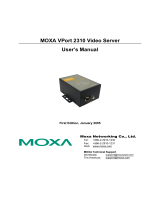
Broadcom
- 19 -
Emulex Drivers for Linux for LightPulse Adapters User Guide
December 30, 2016
Chapter 3: Configuration
FC and FCoE Driver Configuration
You must consider whether the tape device is an FC tape device or an FC-SCSI tape device (in which multiple SCSI tape
devices reside behind an FC controller). If it is an FC tape device, then the WWPN is unique and can be used to create
the persistent name. In this case, the scsi_id command should return this as the unique identifier with a single digit
prefix. If the FC controller has multiple SCSI tape devices behind it, the WWPN is not unique, and the persistent name
must use multiple information elements to build the unique ID. FC Tape Device Examples and FC-SCSI Tape Device
Example are examples of each scenario.
FC Tape Device Examples
The following examples use the scsi_id command to retrieve and generate a unique SCSI identifier:
scsi_id [options]
For these examples, the following [options] are used:
-g Treats the device as white listed. It is needed on the command line or in the scsi_id.config file for the
scsi_id command to generate any output. In the examples, the -g option is needed on the command line
because the vendor and model for this tape device were not in the /etc/scsi_id.config file.
-s Generates an id for the sysfs-device. Note that -s is an invalid option for scsi_id version 147.
NOTE Since the [options] can vary depending on the version of the
scsi_id command, refer to the scsi_id man page on your system for
the correct and complete list of the [options].‘
The following example is an FC tape device using the SCSI generic driver (sg) rather than the SCSI tape driver. The
value returned has a leading prefix of 3, which is the NAA type. The remaining digits represent the FC controller’s
WWPN.
scsi_id -g -s /sys/class/scsi_generic/sg0
350060b000029b592
The following example is an FC tape device using the SCSI tape driver. The value returned is the same as the previous
example.
scsi_id -g -s /sys/class/scsi_tape/nst0
350060b000029b592
The following example uses a different FC tape vendor. Notice that the value returned is similar to the previous
examples, with respect to the leading digit and the WWPN.
/sbin/scsi_id -g -s sys/class/scsi_tape/nst0
35005076300015101
FC-SCSI Tape Device Example
The following is an example of a FC controller with multiple SCSI tape devices behind it (FC-SCSI tape device). When
the Emulex driver is loaded, the SCSI mid-level discovers the SCSI tape devices as follows:
scsi scan: INQUIRY to host 14 channel 0 id 0 lun 0
scsi: unknown device type 12
Vendor: ADIC Model: SNC 4000 Rev: 42d4
Type: RAID ANSI SCSI revision: 03
Attached scsi generic sg5 at scsi14, channel 0, id 0, lun 0, type 12
scsi scan: INQUIRY to host 14 channel 0 id 0 lun 1
Vendor: ADIC Model: Scalar 24 Rev: 227A
Type: Medium Changer ANSI SCSI revision: 02
Attached scsi generic sg6 at scsi14, channel 0, id 0, lun 1,type 8
scsi scan: INQUIRY to host 14 channel 0 id 0 lun 2
Vendor: IBM Model: ULTRIUM-TD2 Rev: 38D0
Type: Sequential-Access ANSI SCSI revision: 03
Attached scsi tape st0 at scsi14, channel 0, id 0, lun 2




















